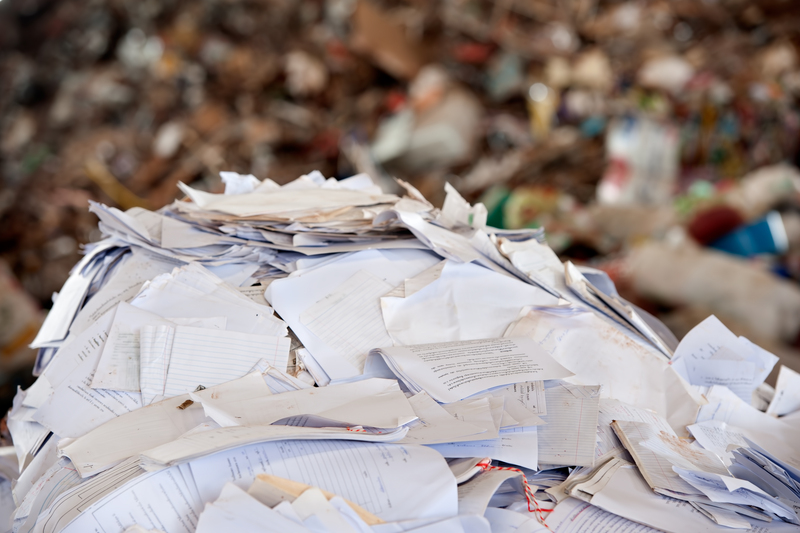Essential Knowledge on Hazardous Waste Types
Understanding hazardous waste types is vital for businesses, communities, and environmental enthusiasts. The improper handling or disposal of these waste materials poses serious risks to human health and the environment. This comprehensive article delves into the different categories of hazardous waste, regulatory frameworks, safe handling protocols, and best practices for segregation and disposal.
What Is Hazardous Waste?
Hazardous waste refers to any unwanted or discarded material that is potentially dangerous or harmful to human health or the environment. Such waste is typically generated by industrial, commercial, medical, agricultural, or even household activities. The risks associated with these wastes stem from their chemical, physical, or biological properties.
- Toxicity: Capable of causing harm to living organisms.
- Corrosivity: Able to corrode metals or destroy living tissue.
- Ignitability: Easily combustible under standard conditions.
- Reactivity: Prone to dangerous reactions, explosions, or releases of toxic gases.
The Environmental Protection Agency (EPA) and similar organizations worldwide provide regulatory oversight, ensuring that the handling, storage, and disposal of hazardous materials align with environmental and safety standards.

Major Types of Hazardous Waste
When delving into hazardous waste types, it is essential to recognize the main categories based on their origins, characteristics, and composition. Understanding these categories is the cornerstone of effective and safe waste management.
1. Listed Hazardous Waste
Listed waste is specifically identified by regulatory agencies as hazardous. In the United States, the EPA's Resource Conservation and Recovery Act (RCRA) outlines four main lists:
- F-list: Waste from common manufacturing or industrial processes, such as solvents used in cleaning or degreasing. Examples: spent solvents, wastewater from metal finishing operations.
- K-list: Waste from specific industries, like petroleum refining or pesticide production. Examples: sludges from petroleum refining, chemical by-products from pesticide manufacturing.
- P-list and U-list: Discarded commercial chemical products. These include unused chemicals or chemicals that have expired. Examples: Certain pharmaceuticals, pesticides, or even lab reagents.
2. Characteristic Hazardous Waste
Not all hazardous wastes are listed by name. Some are classified by exhibiting dangerous properties. These characteristic hazardous wastes fall into four subcategories:
- Ignitable Waste: Substances that can easily catch fire, such as solvents, gasoline, or alcohol-based products.
- Corrosive Waste: Materials with very high or low pH, such as acids (battery acid) or bases (caustic cleaning solutions).
- Reactive Waste: Unstable chemicals that may react violently with water or air, potentially causing explosions or releasing toxic gases.
- Toxic Waste: Substances that are harmful when ingested or absorbed, even at low concentrations. Lead, mercury, and some pesticides are prime examples.
3. Universal Wastes
Universal wastes are widely generated hazardous wastes that are subject to less stringent regulations for ease of collection and recycling. Common types of universal hazardous waste include:
- Batteries: Especially rechargeable types containing lead, cadmium, or mercury.
- Pesticides: Certain recalled or unused agricultural chemicals.
- Mercury-containing Equipment: Thermostats, thermometers, and some electrical switches.
- Lamps: Fluorescent light bulbs and other lights containing mercury or heavy metals.
4. Mixed Waste
Mixed wastes are materials that contain both radioactive and hazardous chemical components. Handling such waste requires specialized facilities due to the dual hazards. Typical sources include the nuclear industry, medical research, and some industrial processes.
Other Types of Hazardous Waste by Sector
It is also helpful to understand hazardous waste types based on their sectoral origin:
- Industrial Hazardous Waste: Includes solvents, heavy metals, paint residues, and manufacturing sludges.
- Medical/Biomedical Waste: Infectious materials, used needles (sharps), and pharmaceuticals.
- Household Hazardous Waste: Paint, cleaners, pesticides, motor oils, and electronic items.
- Agricultural Waste: Pesticides, herbicides, and chemical fertilizers.
- Electronic Waste (e-waste): Disused computers, televisions, and other electronic devices containing toxic components.
Regulatory Frameworks for Managing Hazardous Wastes
Proper management of various hazardous waste types is governed by strict local, national, and international regulations.
- Resource Conservation and Recovery Act (RCRA, USA): Establishes guidelines for generating, transporting, treating, storing, and disposing of hazardous wastes.
- Comprehensive Environmental Response, Compensation, and Liability Act (CERCLA, USA): Governs the cleanup of hazardous waste sites.
- Basel Convention (International): Regulates the movement of hazardous wastes between countries to minimize illegal dumping.
- European Waste Catalogue (EWC): Classifies hazardous wastes within the EU for consistent management.
Why Is Segregation of Hazardous Waste Important?
Mixing different hazardous waste types can lead to dangerous chemical reactions, increased treatment costs, and legal penalties. Segregating wastes by their specific properties and origins is critical for:
- Ensuring safety for workers and the public
- Improving efficiency in treatment and disposal
- Facilitating recycling and recovery of valuable materials
- Minimizing environmental pollution
- Reducing liability for industries and waste generators
Proper Handling and Disposal of Hazardous Waste Types
Safe handling and disposal are essential steps in controlling the risks associated with different types of hazardous waste. Here's an overview of best practices:
Identification and Classification
- Know Your Waste: Use Material Safety Data Sheets (MSDS), product labels, and regulatory lists to determine if waste is hazardous.
- Test for Characteristics: Chemical analysis may be required for wastes not specifically listed.
Storage Guidelines
- Use Proper Containers: Corrosion-resistant, leak-proof, and labeled containers.
- Avoid Mixing: Never combine incompatible hazardous wastes.
- Secondary Containment: Use spill pallets or bunded areas to prevent leakage.
- Monitor and Inspect Storage Areas: Regularly inspect to detect leaks or signs of deterioration.
Transportation
- Licensed Haulers: Ensure transportation by certified hazardous waste carriers.
- Correct Documentation: Use manifests and tracking forms to comply with regulations.
Treatment and Disposal Options
- Incineration: High-temperature burning destroys organic hazardous waste, minimizing toxicity and volume.
- Chemical Treatment: Neutralization, precipitation, or oxidation to reduce hazards.
- Secure Landfill: Engineered sites designed to prevent leaching into the environment.
- Recycling and Resource Recovery: Where possible, reclaim valuable materials (e.g., metals from batteries, solvents from industrial waste).

Potential Risks of Inadequate Hazardous Waste Management
Poor management of hazardous waste types exposes society to a range of threats:
- Human Health Issues: Exposure to toxic substances may cause acute injuries (burns, poisoning) or chronic effects (cancer, neurological disorders, reproductive harm).
- Environmental Pollution: Leaching of chemicals contaminates soil and groundwater; airborne releases create harmful air pollution.
- Legal and Financial Liability: Organizations may face regulatory penalties or lawsuits for improper hazardous waste management.
- Loss of Natural Resources: Preventable environmental damage can destroy habitats and biodiversity.
Innovative Solutions for Hazardous Waste Reduction
With growing awareness of environmental hazards, reducing and properly processing hazardous waste types is more vital than ever. Here are some cutting-edge solutions:
- Green Chemistry: Designing industrial processes to minimize or eliminate toxic by-products.
- On-site Recycling: Solvent distillation, acid neutralization, and other technologies enable waste reduction at the source.
- Product Substitution: Replacing hazardous materials with less dangerous alternatives (e.g., using water-based paints instead of solvents).
- Extended Producer Responsibility (EPR): Encourages manufacturers to take back and safely dispose of their hazardous products after consumer use.
Conclusion: Building a Safer Future Through Informed Action
In summary, essential knowledge on hazardous waste types empowers businesses, communities, and individuals to make safe, responsible choices. By understanding the various types of hazardous waste--whether listed, characteristic, universal, or mixed--and adhering to strict regulatory guidelines, it is possible to protect human health, preserve the environment, and avoid costly legal liabilities.
A robust hazardous waste management program includes accurate identification, proper segregation, secure storage, careful transportation, and ethical disposal or recycling. Embracing innovation and sustainability, while following best practices, lays the groundwork for a cleaner, safer, and greener world.
If you're responsible for handling or generating any form of hazardous waste, make sure to stay updated on regulations, attend safety training, and consult experts. Remember: responsible management of hazardous waste types isn't just a legal obligation--it's a moral imperative for the wellbeing of all.
```